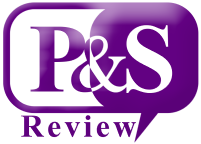Panic Attacks and How to Handle It

Panic attacks are sudden episodes of intense fear that cause a variety of physical and emotional symptoms. These attacks can peak within minutes and usually subside within 30 minutes. While the exact cause is unknown, panic attacks are often triggered by stress, anxiety, or certain phobias.
Common Symptoms During a Panic Attack
Physical symptoms: Rapid heart rate, shortness of breath, chest tightness, sweating, dizziness, nausea, trembling, or chills.
Emotional symptoms: A sense of intense fear or dread, feeling like you’re losing control or going crazy, a feeling of detachment from yourself or your surroundings, and fear of dying.
It’s not a heart attack, but it feels like one
The physical symptoms: of a panic attack can be so intense that it might feel like a heart attack. This can be especially frightening if it’s your first experience. However, panic attacks are not physically harmful, and they won’t cause a heart attack.
The exact cause of panic attacks is still being researched, but there are several contributing factors:
Stress and anxiety: Stressful life events, ongoing worries, or underlying anxiety can trigger panic attacks.
Genetics: Some people might be more predisposed to panic attacks due to family history.
Mental health conditions: Panic attacks can sometimes be linked to anxiety disorders like phobias or social anxiety disorder.
Substance abuse: Drugs or alcohol can also trigger panic attacks.
How to Deal With a Panic Attack
If you’re experiencing a panic attack, you can get through it. Here are some strategies to help you manage a panic attack:
Focus on your breathing: Rapid breathing during a panic attack can worsen your symptoms. Try slow, deep breaths, focusing on inhaling through your nose and exhaling slowly through your mouth. This can help calm your nervous system.
Relaxation techniques: Progressive muscle relaxation or mindfulness exercises can help ease tension and reduce anxiety. Focus on tensing and relaxing different muscle groups in your body, or simply focus on the present moment and your breath.
Ground yourself: Connect with your surroundings. Look around and name five things you see, four things you can touch, three things you can hear, two things you can smell, and one thing you can taste. This can help bring you back to the present moment and out of your anxious state.
Positive self-talk: Challenge negative thoughts with reassuring ones. Remind yourself that this is a panic attack, it’s temporary, and you will get through it.



